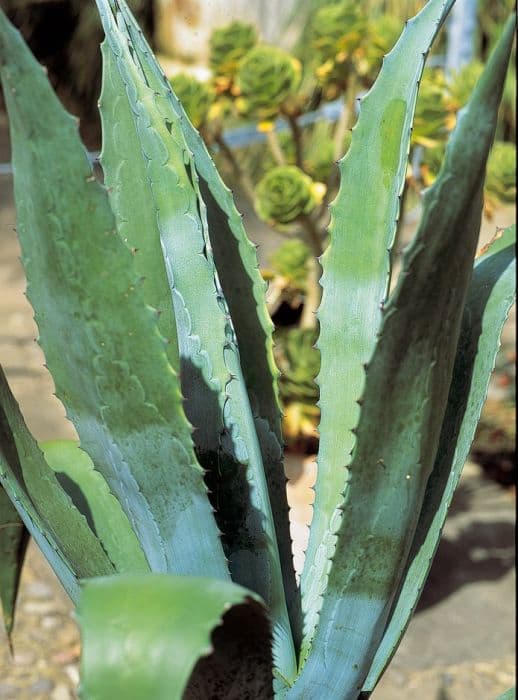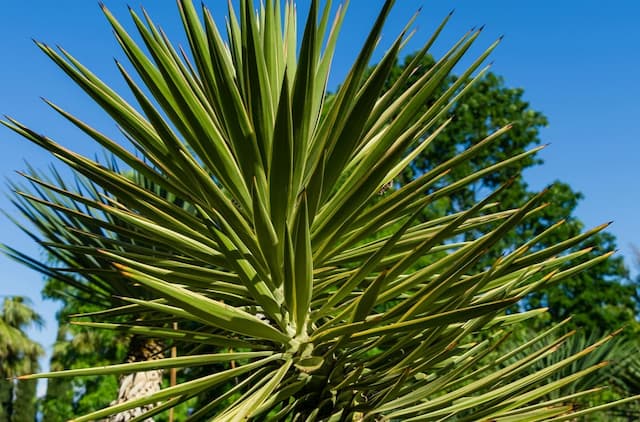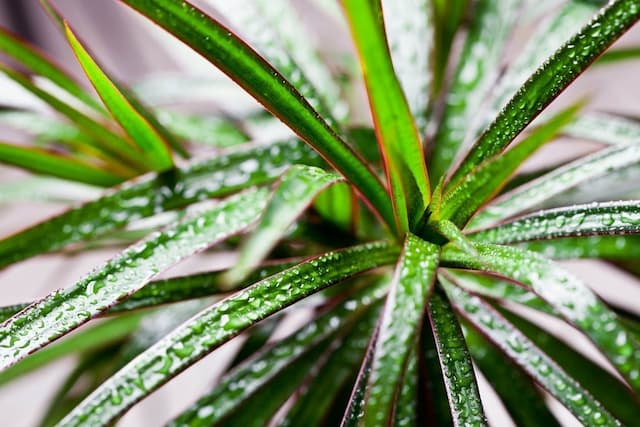Cabbage palm 'Albertii' Cordyline australis 'Albertii' (v)

ABOUT
'Albertii' is a single stemmed evergreen tree with several stout branches ending in tufts of sword-shaped leaves to 60cm in length, tinged pink when young and boldly edged with creamy-yellow; panicles of small white flowers are produced only on mature plan
About this plant
 Names
NamesFamily
Asparagaceae.
Synonyms
Cabbage Tree, Giant Dracaena, Grass Palm, Cabbage Palm, Torbay Palm, New Zealand Cabbage Tree.
Common names
Cordyline australis 'Albertii' (v).
 Characteristics
CharacteristicsLife cycle
Perennials
Foliage type
Evergreen
Color of leaves
Variegated
Height
20 feet (6 meters)
Spread
10 feet (3 meters)
Plant type
Tree
Hardiness zones
9
Native area
New Zealand
Benefits
 General Benefits
General Benefits- Ornamental Appeal: Adds aesthetic value to gardens with its colorful, variegated leaves and striking form.
- Low Maintenance: Requires minimal care other than occasional watering, making it suitable for gardeners of all skill levels.
- Drought Tolerance: Once established, it has good resistance to drought, reducing the need for frequent watering.
- Tolerant of Coastal Conditions: Can withstand the salt and wind often encountered in coastal environments.
- Year-Round Interest: Evergreen in nature, providing visual interest throughout the entire year.
- Wildlife Habitat: Can act as a habitat for birds and insects, contributing to local biodiversity.
 Medical Properties
Medical PropertiesThis plant is not used for medical purposes.
 Air-purifying Qualities
Air-purifying QualitiesThis plant is not specifically known for air purifying qualities.
 Other Uses
Other Uses- Artistic Inspiration: Cordyline australis, also known as Cabbage Tree, has a distinctive form that inspires artists and photographers, often serving as a focal point in landscape paintings and outdoor photography.
- Handicraft Material: The leaves of the Cabbage Tree can be used to weave baskets, mats, and hats, offering a natural and sustainable source of material for crafting.
- Mulch: Fallen leaves from the Cabbage Tree can be collected and used as mulch to enrich garden soil and reduce weed growth.
- Garden Design: The striking appearance of the Cabbage Tree makes it a popular choice for adding vertical accents to garden designs or creating a focal point in a landscape.
- Educational Resource: The tree can be used to teach children and students about indigenous uses of plants and the importance of biodiversity in landscaping and horticulture.
- Floral Arrangements: The long, spiky leaves and flowers of the Cabbage Tree can be incorporated into floral arrangements to add drama and height.
- Festive Decorations: During holidays and celebrations, branches of the Cabbage Tree can be utilized for adornments or as part of festive natural decor.
- Horticultural Training: The Cabbage Tree can be used in hands-on training for budding horticulturists to learn about tree care, including pruning and propagation techniques.
- Cultural Symbolism: In New Zealand, the Cabbage Tree is an iconic symbol often used in art and cultural representations to denote the country's natural heritage.
- Bird Habitat: The tree acts as a habitat for birds, providing both shelter and a place to nest, which can add to the diversity of wildlife in a garden or park.
Interesting Facts
 Feng Shui
Feng ShuiThe Ti plant is used in Feng Shui for its vibrant and uplifting energy, often believed to attract positive energy and prosperity. It can be placed in the wealth area of a home or business, which is usually the southeast, to enhance the flow of chi and encourage financial success.
 Zodiac Sign Compitability
Zodiac Sign CompitabilityThe Ti plant is not used in astrology practice.
 Plant Symbolism
Plant Symbolism- Resilience: Cordyline australis, commonly known as the Cabbage Tree, often symbolizes resilience due to its ability to withstand harsh conditions and regenerate when damaged.
- Endurance: Its long-lasting nature makes it a symbol of endurance, reflecting the plant's capacity to live for many years.
- Prosperity: In some cultures, the Cabbage Tree is considered a sign of prosperity or good luck, perhaps due to its lush, evergreen appearance.
- Spiritual Significance: Indigenous Maori consider the Cabbage Tree as having spiritual importance, often planted in marae (sacred communal areas).
- Protection: The strong and sturdy nature of the Cabbage Tree is sometimes associated with protection and guardianship.
 Water
WaterThe Cabbage tree should be watered thoroughly, allowing the soil to dry slightly between waterings. During its growing season in spring and summer, water approximately once a week, using around 2 gallons of water per session for a mature plant. In the cooler autumn and winter months, reduce watering to once every two to three weeks, monitoring the soil moisture level to prevent overwatering.
 Light
LightCabbage trees thrive in a spot with full sun to partial shade. They will benefit most from a location that receives several hours of direct sunlight daily, although they can tolerate some light shade, especially during the hottest parts of the day.
 Temperature
TemperatureCabbage trees prefer a mild to warm climate with temperatures ranging from 60 to 75 degrees Fahrenheit. They can survive temperatures down to about 15 degrees Fahrenheit, but growth may be affected, and they should not be exposed to extreme cold for prolonged periods. Ideal conditions include avoiding frost and maintaining a relatively stable temperature above the minimum threshold.
 Pruning
PruningCabbage trees benefit from pruning to remove dead or damaged leaves and to maintain their shape. Prune in the late winter or early spring before new growth begins. Generally, it is sufficient to prune the tree once a year, though additional spot-cleaning of dead leaves can be done as needed.
 Cleaning
CleaningAs needed
 Soil
SoilThe best soil mix for the New Zealand Cabbage Tree is one that is well-draining and enriched with organic matter. A mixture of two parts loam, one part peat moss, and one part perlite or coarse sand can work well. Aim for a soil pH between 6.0 and 6.5 for optimal growth.
 Repotting
RepottingNew Zealand Cabbage Trees should be repotted every 2-3 years. It's crucial to repot young plants more frequently to accommodate rapid growth, while mature plants can be repotted less often as their growth rate slows down.
 Humidity & Misting
Humidity & MistingNew Zealand Cabbage Trees prefer moderate humidity levels. They are quite adaptable but do best in environments where the humidity is consistent, ideally between 40-50%. Extremely low humidity should be avoided.
 Suitable locations
Suitable locationsIndoor
Place in bright light, well-drained soil, moderate watering.
Outdoor
Full sun to partial shade, well-drained soil, shelter from strong winds.
Hardiness zone
8-11 USDA
 Life cycle
Life cycleCordyline australis 'Albertii', commonly known as 'Variegated Cabbage Tree', begins its life as a seed, which germinates in moist soil conditions, ideally in partial to full sunlight. The seedling stage is characterized by the emergence of initial roots and shoots, and as it matures, the plant develops a slender, unbranched trunk with a tuft of sword-like, variegated leaves at the top. As it grows, the cabbage tree may produce side shoots, leading to a branching habit, and after several years, it reaches maturity and forms panicles of fragrant, white-to-cream flowers, typically in late spring to early summer. Following pollination, often by insects, the flowers develop into berry-like fruits that contain seeds, thereby enabling the propagation of new plants. Once mature, Cordyline australis 'Albertii' can live for many years, and can withstand relatively harsh conditions, including drought and moderate frosts. Over time, the plant may lose its lower leaves, creating a more tree-like appearance with a longer, bare trunk.
 Propogation
PropogationPropogation time
Spring-Early Summer
The most popular method of propagating the Cabbage Tree or Cordyline australis 'Albertii' is through stem cuttings, particularly during the warmer months when the plant is actively growing, ideally spring through early summer. To start, take a cutting of about 3 to 5 inches (8 to 13 centimeters) from a healthy portion of the stem, making sure it has at least one node. Remove any leaves near the bottom of the cutting to expose the nodes. Dip the cut end in rooting hormone to encourage root growth and plant the cutting in a well-draining potting mix. Keep the soil moist but not waterlogged, and place the cutting in a warm spot with indirect sunlight. Roots should develop within a few weeks, after which the new Cabbage Tree can gradually acclimate to direct sunlight and less frequent watering.









